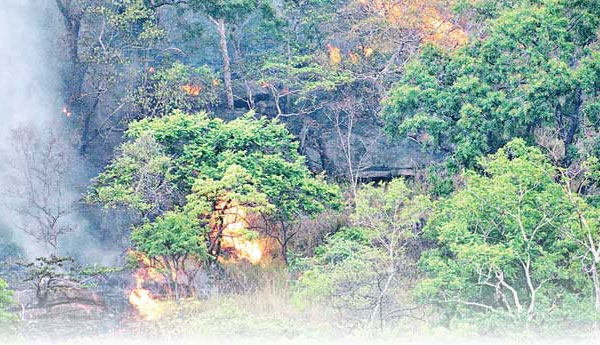
Fire Erupted in Alugolla Forest Reserve in Badulla
A fire has erupted in Alugolla Forest Reserve in Badulla yesterday successfully been extinguished.Badulla police, Army, villagers and the Fire Brigade of the Badulla Municipal Council had put the fire out together.
An estimate of 30 acres of land was destroyed by the fire. Police suspects that animal hunters may have put up the fire in the reserve.
Source – 02/05/2017,Fast News, see more at – http://english.fastnews.lk/44252
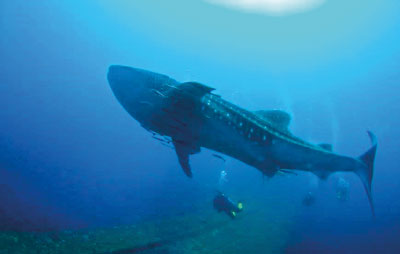
Gentle marine giant drawn to our waters
View(s):
As the sightings of whale sharks increase in our waters, experts say the world’s largest fish needs to be protected.
“We still know very little about whale sharks, but the fish is already ‘endangered’ and highly threatened by both target and bycatch fisheries,” says marine biologist from Blue Resources Trust, Daniel Fernando. He made the remarks at a lecture at an event organised by Sri Lanka Sub-Aqua Club this week.
The blue whale is the largest creature on Earth, but since it is a marine mammal, the crown of being the largest fish goes to the whale shark. A whale shark can grow up to 40 feet (12 meters) or more and weigh about 20 tons. The average whale shark is 8 metres long, but the ones found in Sri Lankan waters are 6-7 metres according to Mr Fernando.
Scientifically classified as rhincodon typus, the whale shark called ‘mini muthu mora’ in Sinhala is in fact a species of shark. But unlike other sharks, they do not have teeth and they are filter feeders that depend on plankton. By opening their huge gaping mouths closer to the surface, they scoop in these plants along with any small fish.
Divers have reported more sightings in the seas off Colombo.
Nishan Perera, a marine biologist who has made regular dives in the oceans off Colombo, reported more whale shark sightings in February and March when these fish are seen in our waters. “Two or three whale shark sightings during this period is normal, but this year there were dozens of encounters,” Mr Perera said.
The Maldives is a famous destination for whale sharks and queries revealed a lower number of encounters in Maldivian waters when there was an increase in our waters said Mr Perera. The whale sharks have spots on the body and its pattern is unique for each individual. So, the Sri Lankan marine biologists also shared the photos of the whale sharks seen in Sri Lankan waters with other international whale shark databases to verify where they are from.
It could be the same individuals seen in different occasions, but the fact that they are seen more often means that the fish that are used to passing through our waters are staying a little longer than previous years.
Author of the “Sharks of Sri Lanka”; Rex I De Silva says the large number of recent sightings baffle him. He says these fish usually migrate to areas rich in plankton. These areas are where there is an upwelling of nutrient-rich water from the depths. So, it is possible that, fuelled by changes in hydrologic factors, such upwellings are now occurring with greater frequency in our coastal waters. Upwellings encourage the growth of plankton which, in turn, attracts other plankton feeders such as fish. Whale sharks also feed on fish (especially small scombrids) which are attracted to the plankton.
Changing oceanic patterns due to global warming is another reason according to the expert. However, these are just suggestions as to why whale shark sightings have become common in recent years. We just do not have sufficient data to draw firm conclusions, cautioned Mr De Silva.
Howard Martenstyn, another expert, points out that there are more nutrients in the western seaboard compared to 2016 as evidenced by increased rainfall and river outflows and that may explain more whale shark sightings. Mr Matenstyn also reminds us that the number of sightings in the same area does not usually equate to the number of whale sharks, highlighting the need for more supporting data and investigations.
The whale shark is a gentle giant, which allows divers swim with them. They pose no danger to humans but an accidental blow from the powerful tail can cause injury. Experts advise keeping a minimum distance of 1.5 metres from the front of the body and 3 metres from the rear.
The whale shark takes about 15 years to mature to reproduce and is vulnerable to overfishing. Sri Lanka passed laws banning the catching of whale sharks in 2015, but awareness of such regulations, along with implementation, is often lacking points out Daniel Fernando.
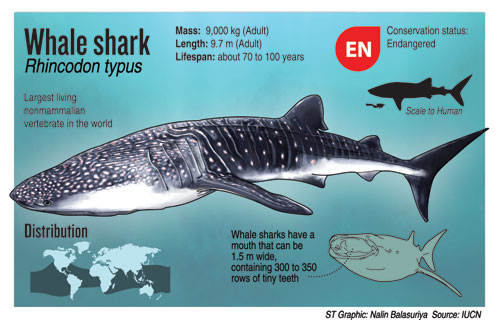
Source – 30/04/2017, The Sunday Times , See more at – http://www.sundaytimes.lk/170430/news/gentle-marine-giant-drawn-to-our-waters-238733.html
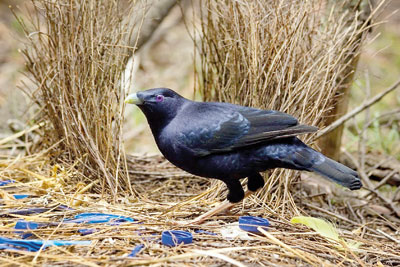
Animal architects
Dr. Sriyanie Miththapala looks at some of the amazing structures created by animal builders
The Burj Khalifa in Dubai is the world’s tallest building, with 160 storeys and towering at 829.8 metres. The Manta Resort on Pemba Island has underwater rooms where guests can watch sharks and rays floating past their beds. The Haohan Qiao Bridge in China is a glass-bottom bridge that is 179.8 metres tall and nearly 300 metres long. The pyramids of Egypt, the Colosseum of Rome, Borobudur in Indonesia and the iconic Taj Mahal of Agra stand as testaments to spectacular architects of the past.
Architecture is not new. Humans have been building since the Neolithic or New Stone Age from some 9000 BC to 5000 BC years ago.
However, animal builders have been in existence a long, long time before this — they are our planet’s first builders and they craft homes of mind-boggling designs.
Animals construct structures to a) build homes to raise their young and protect themselves against the elements or predators; b) catch or trap prey; and c) attract the opposite sex.
Colonial insects — termites, bees, wasps and ants — are champion architects. Individually tiny and vulnerable to being squashed, collectively, in a colony of millions, insects such as termites can build termite mounds that can be higher than five metres. It is estimated that the collective weight of these million termites is 15 kilogrammes, and that they can move a quarter of a metric ton of soil every year when they build these mounds using a combination of soil, saliva and excreta.
The mounds are marvels of architecture, with a complicated and extensive system of tunnels that generates ventilation and cools the air inside.This cooling is critical for these insects whose bodies would dry out in the arid environments of Africa, Australia and South America where they live. However, recent studies have shown that this complex system of tunnels does not merely generate passive air conditioning, but even functions like a giant lung to expel accumulated carbon dioxide and to pull in oxygen.
Prairie dogs — small communal mammals of the rodent family, found in the prairies of North America — go one step further, and build their own underground towns extending over some 40-50 hectares (that is, the size of 40-50 sports fields), with a maze of tunnels, defined sleeping quarters, nurseries, toilets and listening posts for predators situated close to the surface. These towns also have a built-in drainage system in case of flooding. They allow prairie dogs to raise their young in safety from predators and avoid the vagaries of the prairie weather, which can get too hot during the days in the summer and too cold at night during the winter.
Sociable weavers use different materials for different sections of the nest: large twigs and stems for the roof of the nest and grasses poked in between; grass spikes fencing tunnel entrances to deter predators; while nesting chambers are lined with soft materials, such as feathers, fluff, wool, or hair.
The advantage of this mammoth nest is again for protection against the elements and predators. During the day, the thatched roof of the nest keeps it cool from the scorching sun, and in the night, when the temperature drops sharply, the heat retained in the nest, keeps the colony of birds warm.
The north American beaver — another rodent — is second only to humans in its capacity to alter its environment, and is a master engineer, who gnaws through and fells trees across rivers, and then builds dams using boulders like bricks and mud like cement for construction, creating not merely a city or an apartment but an entire ecosystem — a wetland— safe from predators. Within this wetland, it constructs its home — called a lodge – a fortress of boulders and branches, so strong that a bear cannot break in. Beavers dig burrows underground into the wood around where they feed on plant material and then retreat to the safety of their wetland. These ecosystem engineers alter the flow of rivers, prevent erosion and raise the water table, purifying water as silt builds up and adsorbs toxins. All these changes attract a range of other species, such as invertebrates, amphibians, fish and birds.
Just as prey evolve mechanisms to avoid predators, predators go to great lengths to catch prey. Spiders produce silk protein from structures called spinnerets in their stomachs and weave webs to trap their prey. Trapdoor spiders do not weave webs like other spiders, but live in burrows which they did underground. They construct doors for these burrows using silk from their bodies, plant material found in the environment and soil. They then ingeniously make a hinge for these doors with silk and booby trap the surrounds also with their silk, close the perfectly camouflaged door, and wait underneath it. When an unsuspecting animal trips the booby trap, the spider springs out and kills it.
Animal architects also build to attract mates. The drab bower birds of Australia and New Guinea are extraordinary builders and decorators, where the male builds a bower for his mate and decorates it with various objects such as berries, flowers, shells, drinking straws, keychains and bits of plastic. The female chooses the best decorated and neatest nest. Among these astonishing builders, is the Shan Jahan of bower birds, the Vogelkop bower bird who builds a cone-shaped metre-high bower, woven around a central sapling, which he then carpets with moss. He carefully decorates the entrance with flowers, berries and coloured stones, all arranged according to an intricate pattern of colours. This process takes nearly a year, during which the male assiduously cleans and rearranges the area. Each bower is different as each male prefers a different set of colours.
In a world where we have over-used natural resources, destroyed natural habitats and poisoned the air and water to alter the environment to suit us, it may benefit us well to turn to nature and learn from it.
We may now be striving for sustainability, but a sustainable world already exists in nature which has fine-tuned its products during a 3.8 billion year period. Termite mounds have a sophisticated air-conditioning system that uses no fossil fuels to keep the structure at a temperature that fluctuates only within one degree Celsius, while we humans use 20% of the world’s energy to keep buildings in cities at similar temperatures. Corals are tiny colonial marine animals that extract calcium carbonate from the sea and secrete it as a cup of calcium carbonate from the bottom half of their bodies, building great ramparts of coral reefs. In doing so they lock in this carbon. In contrast, when we use cement to build infrastructure, approximately 900 kilogrammes of carbon dioxide are released into the atmosphere when each tonne of cement is made, contributing to global warming, We extract natural resources, turn them into short-lived products and after using them, we chuck them out as waste. Nature, on the other hand, never throws anything away — what is waste for one organism becomes food for another and is eventually recycled as nutrients into the ecosystem.
As Janine Benyus writes, ‘Nature runs on sunlight. Nature uses only the energy it needs. Nature fits forms to function. Nature recycles everything. Nature rewards cooperation. Nature banks on diversity. Nature demands local expertise. Nature curbs excesses within. Nature taps the power of limits.’
Benyus coined the word biomimicry to popularise this concept of looking to nature to provide sustainable solutions. In the last three decades, this branch of science has grown and developed producing some inventive solutions to our planet’s problems.
Inspired by the self-sustaining air-conditioning systems of termite mounds, Zimbabwean architect Mike Pence designed the Eastgate Building, an office complex in Harare. Made mainly of concrete, this building has a ventilation system which draws outside air using fans into the building and this air is warmed or cooled by the building depending on which is hotter, the building concrete or the air. This air is then circulated through the building before it is sent out, again by fans through chimneys at the top. This building uses 90% less than the energy of a conventional building its size and its owners have saved 3.5 million USD by not installing an air-conditioning system, excluding the cost of running it daily.
Matthew Parks of Atlas Industries looked at the Fogstand beetle of the Namibian Desert which lives in a harsh, arid climate where water is scarce. In the nights, when fog collects in the air, this beetle raises its back into the air. Parts of its shell-like external skeleton is waxy and repels water, while other part of it has bumps that collect the water as droplets, which then runs down along chutes towards the beetle’s mouth. Park designed the Namibian Hydrological Centre of Excellence, called the ‘Fogcatcher’ with ‘sails’ to catch water from the desert fog, to meet the growing challenge of finding drinking water in a desert area. Pak Kitae of the Seoul National University of Technology, had a simpler solution, making a Dew Bank Bottle that similarly collects morning dew on a bottle.
One of the most elegant biomimicry innovations is the Cardboard to Caviar project, that imitates the closed loop of an ecosystem’s recycling processes. Graham Wiles, the CEO of the non-profit Green Business Network (GBN) in Yorkshire, commenced this project as work rehabilitation for recovering heroin addicts. Restaurants pay the GBN to take cardboard from their premises. GBN does so, shreds it and sells it as horse bedding. Eventually, the bedding needs replacement, and the stable owners pay GBN to replace it. GBN takes the soiled bedding and feeds it to worms to make compost. The compost nourishes plant beds and the extra worms are fed to the sturgeon in a fish farm. Caviar is produced from these fish, and sold back to the restaurants where the cardboard was collected in the first place. This is an excellent example of how every link in an ecosystem reuses waste and recycles nutrients. That it takes the pressure off the endangered wild sturgeon, is an added bonus.
These are exciting innovations that can change the way we think and, the way we can live sustainably, in harmony with the Earth. In order to do so, we must stop ravishing the earth of its bounty and learn to look and listen to the lessons it gives us freely.
Source – 30/04/2017, The Sunday Times, See more at – http://www.sundaytimes.lk/170430/plus/animal-architects-238352.html
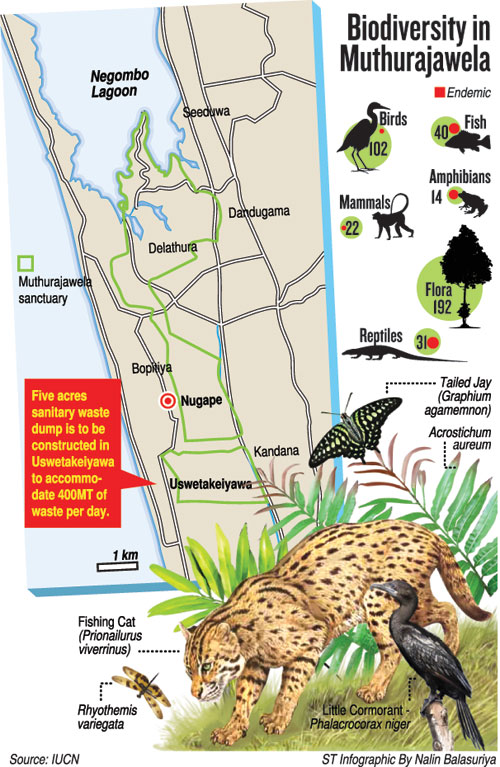
Bopitiya dump stirs up garbage danger, anger
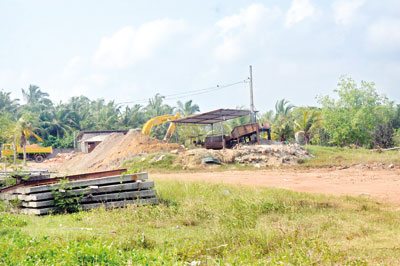
In its haste to dump garbage anywhere but Meethotamulla following the deaths and devastation on April 12, the Government is stirring up more anger across the city.
Residents of Bopitiya are up in arms over the garbage being dumped in Muthurajawela, a part of a wildlife sanctuary.
Residents and environmentalists say the area has been contaminated after several days of garbage dumping by the Colombo Municipal Council.
The Director General, Department of Wildlife Conservation, W. S. K. Pathiratna said yesterday, the dumping had begun while he was out of the country.
Residents complain that the garbage was dumped after a person had claimed ownership of the site.
They said they built their homes bordering the buffer zone of the Muthurajawela sanctuary and had requested approval from the Department of Wildlife Conservation, Sri Lanka Land Reclamation and Development Corporation, and the Agrarian Services.
They say approval had not been sought from the Central Environmental Authority before hauling solid waste to Bopitiya.
During a visit, the Sunday Times saw how people had blocked the narrow entrance to the lane of a housing scheme leading to the dumping site. Police were present.
Within the land, backhoes were seen excavating sand, while a part of the site was being used to dump garbage.
Rev Father Dinush Gayan, assistant parish priest of Bopitiya Church told the Sunday Times that about 300 tonnes of non-biodegradable waste are dumped in a single day.
He said that even when the Agrarian Services requested documents as well as environmental impact assessments, neither the owner of the site nor the government officials could provide them.
Rev Gayan said goons associated with the site owner disrupted a silent protest.
K.L Newton Perera, a lawyer who is also a resident of Nugape, Muthurajawela said some people are using the garbage to fill the land.
Mr Perera said the Meethotamulla dump also was created on marshy land.
“Bopitiya too is included to the Muthurajawela sanctuary and the dump site is also in a watery, marshy soil which stays wet during the dry seasons,’’ he said.
Anil Lankapura Jayamaha, the president of the Organisation for protecting the Muthurajawela Sanctuary, said that the government was dumping garbage by relying on the ownership claims of a person.
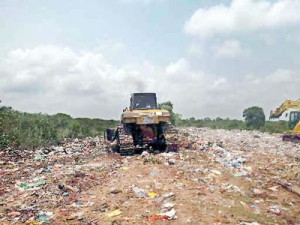
“The muddy soil and the waterways which people use for bathing, drinking and fishing, will be poisoned and cause health issues,’’ he said.
He said criminal gangs have moved in to extort money from garbage lorries, just as it was in Meethotamulla.
An official of the Agrarian Services, said 40 foot craters have been dug to dump waste.
The officer said she and officials wrote to President Maithripala Sirisena and the Colombo Municipal Commissioner, and were planning to go to court.
Meanwhile, Land Reclamation chairman, Asela Iddawella, said the Megapolis Ministry and local government offices of Wattala have proposed a waste dump.
The cabinet this week approved a recommendation for a site to manage 400 metric tonnes of waste per day on a five-acre site in the Muthurajawela area under the Wattala Divisional Secretary.
Mr Iddawela explained that the land at Muturajawela will be used to create an electric power plant, while another land will be used as a sanitary disposal site.
“The plant will create power from 500 tonnes [of waste] per day while a business model garbage dump will also be erected,’’ he said.
He said the waste-to-electricity plant will be operational after three years or a minimum of two years, while the sanitary land fill will take over 18 months.
He said the President also had asked that the engineering assessment and environmental impact assessment be done while the project continues.
The Director General of the Central Environmental Authority, K.H Muthukudarachchi said that the Megapolis and Western Development Ministry was carrying out garbage management programmes.
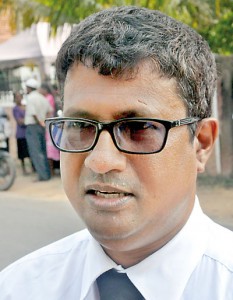
He said the CEA had done environmental impact assessments for two projects at Muthurajawela, undertaken by the Ministry of Megapolis and local councils.
He said garbage from Colombo will be dumped at Muthurajawela, Karadiyana and Aruwakkalu.
Environmentalist of the Biodiversity Conservation and Research Circle, Supun Lahiru Prakash, said that sanitary fillings are done after recycling various materials and by burying the most toxic waste.
He said the garbage will contaminate the waterways which support the bio diversity of the sanctuary.
He claimed that the private land in Bopitiya is within the vicinity of the sanctuary and the dump has caused damage already. He also warns of the flooding threat.
Mr Prakash said that the government move tramples on laws including wildlife legislation and also disregards a court order.
Source – 30/04/2017. The Sunday Times, See more at – http://www.sundaytimes.lk/170430/news/bopitiya-dump-stirs-up-garbage-danger-anger-238777.html

Pinnawala Elephants to be made available to institutions and individuals
Cabinet has approved a proposal to make available elephants from the Pinnawala Elephant orphanage and National Zoological gardens to individuals and institutions.
A statement on the decision (Document no 60) said “maintenance of the present number of 88 elephants in a restricted land area of 30 acres at Pinnawala has become a difficult task.”
As such a proposal has been put forward by Minister of Wildlife and Sustainable Development Gamini Jayawickrama Perera, “to provide some elephants to individuals and religious places under definite conditions.”
The Cabinet has approved Mr. Perera’s proposal which would permit the adoption of baby elephants to be adopted by individuals and religious places under specific conditions.
The proposal was approved by Cabinet and recommendations on issuing orders for providing elephants for Peraheras, regularizing registration of domesticated elephants and ensuring their protection were also approved.
Source – 27.04/2017, Times Online, see more at – http://www.sundaytimes.lk/article/1020725/pinnawala-elephants-to-be-made-available-to-institutions-and-individuals
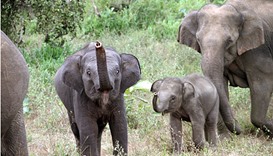
Sri Lanka overturns ban on adopting baby elephants as orphanage get overcrowded
Apr 26, Colombo: Sri Lanka has said on Wednesday it would allow individuals and temples to adopt baby elephants under definite conditions overturning a ban on adoptions.
The cabinet of ministers approved a proposal tabled by the Minister of Sustainable Development and Wildlife Gamini Jayawickrama Perera to provide some elephants to individuals and religious places under definite conditions.
The Minister has pointed out that maintenance of the present number of 88 elephants in a restricted land area of 30 acres at Pinnawala Elephant Orphanage has become a difficult task.
The Cabinet of Ministers also approved recommendations on issuing orders for providing elephants for Perahera (religious processions), regularizing registration of domesticated elephants and ensuring their protection.
The ban on adopting elephants had led to worries there would not be enough tame elephants for Buddhist pageants, an AFP report said.
“Wildlife conservation is good, but we also need to conserve our cultural pageants,” government spokesman Rajitha Senaratne was quoted as saying.
Senaratne said the government decision had been motivated partly by overcrowding at Pinnawala, which was set up as an elephant orphanage and now runs a successful breeding program.
He said strict conditions would be put in place to ensure the animal’s welfare. Individuals would have to pay 10 million rupees ($66,000) for an elephant, while temples would get them for free.
Last year, Sri Lanka unveiled tougher laws, including a ban on using young elephants for logging and other physical work, as part of a crackdown on cruelty to animals.
Capturing wild elephants is illegal in Sri Lanka where according to official records the population of elephants in the wild is at about 7,500.
Source – 26/04/2017, Colombo Page, See more at – http://www.colombopage.com/archive_17A/Apr26_1493219655CH.php
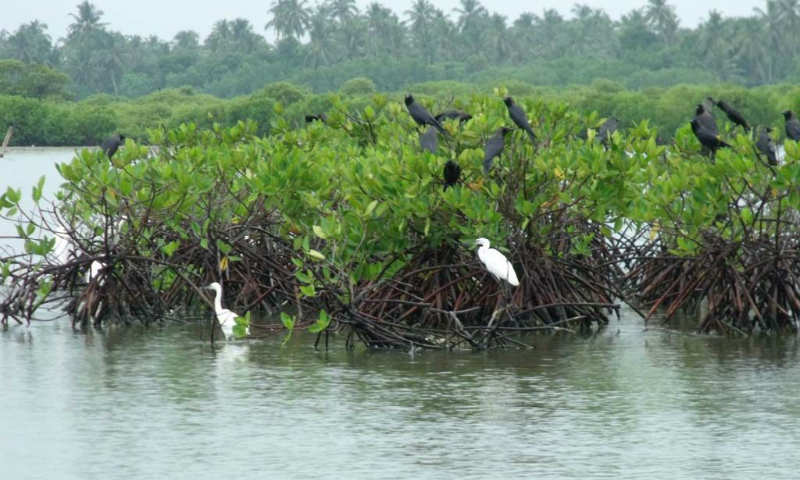
A sanitary landfill at Muthurajawela marsh
Image courtesy: sarathboattours.com
The Cabinet approved the proposal to build a sanitary landfill, at Muthurajawela in Wattala. The garbage collected within Colombo city limits will be dumped there.
The proposal was made by Faiszer Musthapha, the Minister of Provincial Council and Local Government, who added that the project must be implemented as soon as possible.
A Committee was appointed to look into the matter, and they estimated that 400 metric tonnes of garbage can be dumped into the proposed sanitary landfill per day.
Source – 26/04/2017, Front Page, See more at – http://www.frontpage.lk/page/A-sanitary-landfill-at-Muthurajawela-marsh/20027
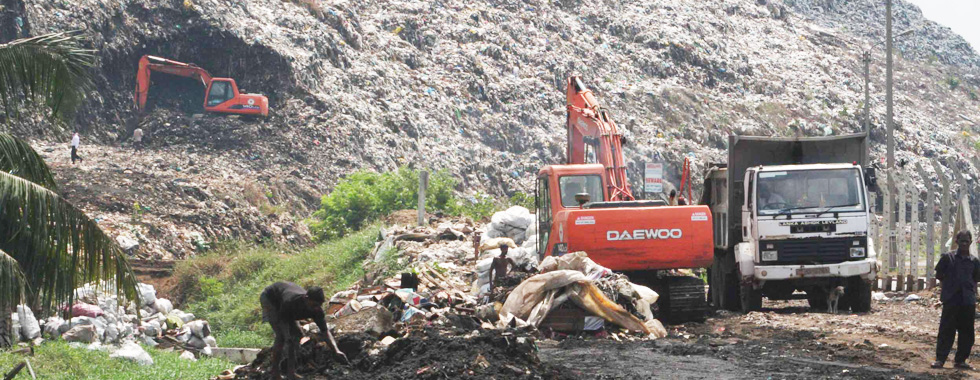
How San Francisco is Becoming A Zero Waste City
San Francisco has deployed its widely successful solid waste management programme based on the ambitious goal of zero waste by 2020. To ensure that no material goes to landfill or high temperature destruction, the city’s zero waste goal means that products are designed and used according to the principle of highest and best use. Zero Waste also means that discarded materials follow the waste reduction hierarchy: reduce, reuse, and then recycle or compost.
To meet its zero waste goal, San Francisco has used a three-pronged approach that addresses the legal, administrative, and social challenges of waste management reform. Specifically, the City enacted strong waste reduction policies; partnered with Recology, a like-minded materials management company, to innovate new programmes; and created a culture of recycling and composting.
http://www.c40.org/profiles/2013-sanfran
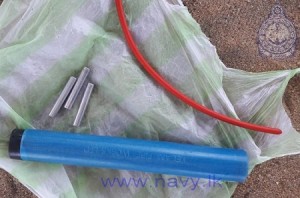
Six persons held for engaging dynamite fishing
Six local fishermen who were engaging in illegal fishing practices using dynamite in the sea area off Kuchchaveli arrested by Navy personnel yesterday, Navy said.
Along with the suspects, a dinghy, 2 unauthorized fishing nets, a pair of diving fins, a diving mask, 3 non electric detonators and 100 g of water gel were also taken into naval custody. The suspects, dinghy and other fishing gears were handed over to the Kuchchaveli Police for further investigations.
Source – 24/04/2017, Times Online, See more at – http://www.sundaytimes.lk/article/1020532/six-persons-held-for-engaging-dynamite-fishing
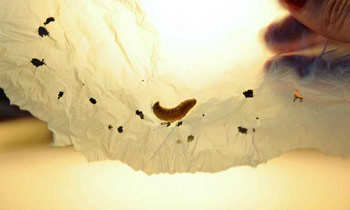
Hungry caterpillar Joins fight against plastic pollution
A moth caterpillar commonly bred to provide fish bait feasts on a notoriously resistant plastic, scientists reported Monday, raising hopes the creature can help manage the global problem of plastic-bag pollution.
“This discovery could be an important tool for helping to get rid of the polyethylene plastic waste accumulated in landfill sites and oceans,” said Cambridge University professor Paolo Bombelli, co-author of a study published in the journal Current Biology.
Polyethylene represents 40 percent of Europe’s demand for plastic products, mostly in the form of packaging and shopping bags. Taking many years to biodegrade, these objects constitute a serious hazard for the environment, especially for sea life, when they are not recycled.
In the European Union, 38 percent of plastic is thrown out in landfills. The promising discovery centers on the wax worm — the name for the caterpillar larva of Galleria mellonella, or greater wax moth. In its pre-caterpillar form, the species is commercially raised as maggots to provide fish bait and aquarium food.
The moth is also a scourge of apiculture, laying its eggs in the precious honeycomb of beehives. The find happened by accident at the home of the study’s lead author, Federica Bertocchini, a biologist at the Institute of Biomedicine and Biotechnology of Cantabria in Spain. Bertocchini keeps beehives as a hobby.
“When I went to clean them for reuse in the spring, they were infested with (wax) worms,” the researcher told AFP. “So I put them in a bag.
Then, after a while, I saw the bag was full of holes and these caterpillars were crawling all around my place.” Startled by the caterpillar’s voracious appetite, Bertocchini and a team from Cambridge University decided to conduct experiments to find out just how much, and how quickly, the pests could consume environmentally harmful plastic. They placed hundreds of the small, yellowish creatures on top of a supermarket plastic bag.
Within 40 minutes, holes began to form. Twelve hours later, the caterpillars had consumed 92 milligrammes (0.003 of an ounce) of the stuff, far swifter than fungus and bacteria would have taken.
In their next test, the biologists confirmed that the larvae fully digest a plastic meal, breaking down its chemical components. Covering a plastic bag with mashed-up caterpillars produced a similar results, suggesting that an enzyme or some other compound was at work. “
The caterpillar produces something that breaks the chemical bond, perhaps in its salivary glands or a symbiotic bacteria in its gut,” Bertocchini said. The answer may lay in the worm’s habitat and eating habits. Growing in bee colonies, the moth larvae feed on beeswax, a digestive process that scientists believe may be similar to breaking down polyethylene. “Wax is a polymer, a sort of ‘natural plastic,’ and has a chemical structure not dissimilar to polyethylene,” Bertocchini suggested.
It remains unclear if a single enzyme or a combination of molecules are responsible for degrading plastic. But biologists hope to identify and reproduce the active agent artificially. “Using million of caterpillars on top of plastic bags would not be feasible,” Bertocchini said.
Manufactured on a large scale, the plastic-degrading substance would, in theory, take the form of an environmentally harmless liquid that could be used in plastic treatment facilities. (NDTV)
Source – 25/04/2017,Dailymirror- See more at: http://www.dailymirror.lk/article/Hungry-caterpillar-Joins-fight-against-plastic-pollution-127738.html#sthash.ZyO2g25o.dpuf













